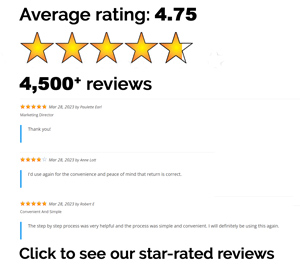The American Rescue Plan was created to provide relief to millions of Americans. It provided stimulus payments, lower health insurance premiums and several tax law changes which will impact your return when you file next year. Here are some of the big changes heading your way.
The child tax credit will be more beneficial for families
The child tax credit has gotten a full makeover. For 2021, it’s worth more money, fully refundable and some families will be receiving advance monthly payments of the credit. Previously, the maximum credit was $2,000 with up to $1,400 being refundable. Now, it’s worth $3,600 per child aged 5 or younger at the end of 2021. Those with dependents aged 6 – 17 can receive up to $3,000 per child. To receive the full credit, your modified adjusted gross income cannot exceed:
- $75,000 for single filers or married filing separately
- $112,500 for head of household
- $150,000 for married filing jointly and qualifying widowers
Advance child tax credit payments start in July
From July 15th through the end of the year, the IRS will be issuing advance monthly payments of the child tax credit. You’ll get half of your estimated credit now and the rest when you file your 2021 tax return. The monthly payment will be $300 for each child aged 5 or younger and $250 per child aged 6–17. The payment schedule is as follows:
- July 15th
- August 13th
- September 15th
- October 15th
- November 15th
- December 15th
The payments will be based on your 2020 or 2019 tax return. If you haven’t filed yet, do your 2020 taxes now with ezTaxReturn so the IRS has your most up to date information. It’s fast and easy, file now.
Note: If you prefer to receive your full payment when you file your tax return, you will have the option to unenroll using the Child Tax Credit Update Portal.
Your childcare expenses can get you an $8,000 tax credit
After working from home for the last year, many parents are starting to transition back to the office and pay for childcare again. If you have kids, you know how expensive that can be. The good news is your childcare expenses can make you eligible for the child and dependent care credit. For 2021, the credit value has gone up and it’s fully refundable. Parents can claim up to $8,000 in expenses for one qualifying child and $16,000 for two or more qualifying children. The maximum credit is 50% of your expenses. In other words, $4,000 for one child and $8,000 for two or more children. However, you’ll receive a smaller payment once adjusted gross income reaches $125,000. You no longer qualify once your adjusted gross income is over $438,000. The child and dependent care credit isn’t just for childcare, you can also claim the credit if you have a spouse or other dependent who is unable to care for themselves.
More childless workers can benefit from the EITC
The Earned Income Tax Credit (EITC) was designed to help low-income workers, but was much more beneficial for those with kids. That’s going to change for 2021. The credit amount has been almost tripled for childless workers and more people will qualify. The maximum credit for those without kids is $1,502. To qualify, you must be at least 19 years old and earned less than $21,430 ($27,380 for married couples filing jointly).
Higher contribution limits for a dependent care FSA
A dependent care FSA lets you set aside pre-tax money to pay for childcare expenses such as daycare, babysitting and summer camp. The money can be withdrawn tax-free if it’s used for eligible childcare expenses. The downside is that you must use the money by the end of the year, or you’ll lose it. Normally, the maximum you can contribute is $5,000 but for 2021, you can set aside up to $10,500.




